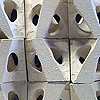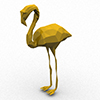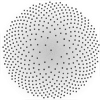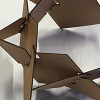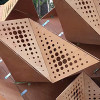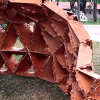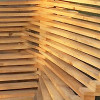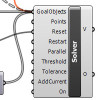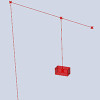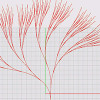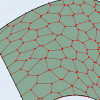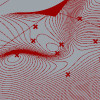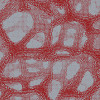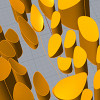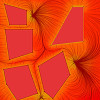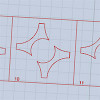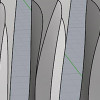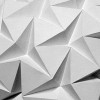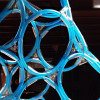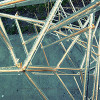In the last semester’s mid-term project of Computation-based Basic Design 2, we experimented with the casting method for studying solids and voids. Students worked in groups of four. First, they designed a set of components within a 10cm bounding cube. These cubes represent 1m3 on a 1:10 scale. After that, they multiplied them into a system of voids with a function for human use. They fabricated at least 24 pieces […]
Posts categorized under Education
Below is a simple tutorial class we studied in Rhino in 2015 and 2016. The exercise is called “A Low-Poly Habitat”. The aim is to create simple polygon models by analyzing the overall geometric topology of an animal body. First-year design students attended the exercise and they are encouraged to create these models using blueprints from www. They used simple commands such as point, line, and surface from 3 or […]
“Grasshopper” çalıştayı İstanbul Bilgi Üniversitesi Eyüp / santralİstanbul Kampüsü’nde, Mimarlık Fakültesi içerisinde 26 ve 27 ekim tarihlerinde 2 gün boyunca saat 10:00 – 16:00 arasında gerçekleştirilecektir. “Grasshopper ile Parametrik Modelleme” kitabının yazarları Tuğrul Yazar ve Serkan Uysal tarafından yürütülecek çalıştayda Grasshopper’a giriş, veri yapıları ve temel geometrik dönüşümler incelenecek ve uygulamalar yapılacaktır. Çalıştay dili Türkçedir. Katılım ücretsizdir. Katılım için önceden kayıt yaptırmak gerekmektedir. Kayıt başvurusu için 24 ekim saat 18:00’e kadar […]
This project started as a study on a geometric method called quadror, but resulted in an amazing self-standing structure with the capability to fold flat. Initially, after Ayza made lots of sketches and models, the project team continued the research and finally, they managed to build one prototype only in two days. Here are some photos of this project but there are much more variations and models on their own […]
Another well-organized group of students produced this self-standing structure in only a couple of days. This group joined the same 8mm wooden plates into a set of components of 8-sided polyhedra. Then, they joined these components in a fashion that the macro form emerged from the angles of their geometry. Below are some of the pictures of their production phases: The final prototype Some phases of the production Model of […]
A very hard-working group from this year’s Computation-based Basic Design Studio produced this amazing structure. They joined 8mm cnc-cut wooden plates using puzzle-like cuts and tightened them with strings. A good example of group coordination produced this result in two days. Below are some photos of the prototype and the project phases: Final prototype. Interlocking Structure The joint details and the first experiments. *Students: Aslı Naz Çolakoğlu, Aybike Yılmaz, Bilge Kardelen […]
In this final project for İBU Basic Design Studio in 2015, wooden sticks are arranged to produce ruled surfaces for various uses such as sitting, leaning, etc. Here are some photos of the final prototype and its production phases. Final prototype Digital model First sketches. *Students: Dilara Çerçi, Elham Kaya, Gizem Kama, Gül Zorlu, Gülşah Kılıç, Orhan Ünver, Yiğit Altındağ, Sena Ortaç Here is the students’ blog on this project.
After several readings, I’ve understood the way of working the new and very interesting feature of Kangaroo 2: “Grab”. Now, we can actually grab the Grasshopper objects from Rhino viewport! Also, on one hand, the new Kangaroo has a very special way of working (not common to us, native Grasshopper users) and on the other hand, it is very very easy to use and understand now. I loved that. Here […]
It is a nice exercise to study various components of point-to-curve transformations and vice versa. Tower Crane was our second-week exercise at İstanbul Bilgi University Faculty of Architecture Parametric Modeling class, asking students to design and draw a parametric object that has joints and parts that are moving alongside straight lines. Below is the most “safe-side” solution for me, although there are also very complicated solutions such as Mertcan’s. [GHX: 0.9.0076] here […]
This is a classical method of generating tree-like forms utilizing a simple command “Arc SED”. The idea is simple, as the command draws arcs using an input direction vector, so this could easily be implemented creating a “smooth” composition of curves just by iteration. Actually, this has been a previous study, discussed before here, using Hoopsnake. Now, this time I’m implementing the same algorithm using Anemone and a couple of other […]
About to finish the well-defined section of this year’s Parametric Modeling course, here are the mid-term questions I’ve asked; First question checks if the curve < > point conversions are well understood in Grasshopper. Evaluating a parametric curve and generating the closest point from another curve. This also requires a basic understanding of the use of the Grasshopper interface. The second question was testing a basic and classical use of […]
Site models could be calculated for laser cutting easily using Grasshopper’s native components. This definition was a practical one we created in the Parametric Modeling course to see that Grasshopper could also be utilized to prepare fabrication documents not generating design outcomes. However, this definition is a draft one and could be improved more by putting labels inside of each cut piece, trimming the edges properly and so on. It is […]
Image Sampler of Grasshopper saves life if used responsibly. While explaining the component to this year’s ARCH362 students, I used this simple example that generates numbers from a beautiful picture of “metal foam” and uses it to generate lots of circles: Metal foams are lightweight but strong materials, that are typically produced by injecting gas into the liquid metal. Of course, it becomes easier to teach something when you manage […]
Another tutorial we’ve analysed together with ARCH362 students last week was the one that mimics Zaha Hadid’s Kartal Masterplan. Although the project of Zaha Hadid was pretty much controversial among Turkey’s architectural critics (and most people also), we’re not dealing with how successful or “ugly” it is, but the most simple version of the technique that generated such forms. We have a term “çakma” in Turkish that means “conscious imitation, possibly […]
This year’s Parametric Modeling class starts with some of the very basic use of Grasshopper concepts. This definition is a practical start-up of using force fields in the architectural design process. However it does not compute any physical phenomena (such as circulation of people, wind, or anything else), but shows a simple way to tell Grasshopper about walls that push the field, and points that pull the field. I’ll post more […]
After this tutorial, we are still working on the basic ways of making contouring easier in Grasshopper. This is the updated version of the 2-year-old contouring definition in Grasshopper, with some additional functionality. It produces a flat and properly numbered output for each section. However, it does not include optimized nesting to reduce material use. Here is the Grasshopper definition (don’t left click, use right click and “save” option) [GHX: 0.9.0076] and the […]
Gaudi-like columns are generated as part of the “boolean” classes of Design Computing. The most inspiring, beautiful, and ugly variations are often done by boolean intersection, as this operation is the surprising one of the three brothers. While the class deals with the concept of emergence once again via solid and void relationships, constructive solid modeling techniques are introduced. Although it is widely used as a spatial analysis approach in […]
Classical folding methods were subjects to be tested and studied in this semester’s design geometry classes. This has been very useful in introducing first-year students to 3d euclidean constructions and using physical objects as references to a digital model. Groups of students studied different folding methods and made both physical and digital models. Two of these methods were dominant in the class however, one of them was the variations of Miura-Ori, […]
The Hose is our last material system of 2014, designed and produced at the Computation-based Basic Design I studio section. We instructed this section together with Can Sucuoğlu and Birgül Çolakoğlu. This group of students succeeded in developing a flexible but strong connection detail. It allowed them to generate the desired macro form quickly. However, the overall look of the final composition should have been much better. Because, it was placed in […]
The 2015 Basic Design Studio was one of the good seasons. The project named “Fireball” is an example of high concentration. A group of students developed a material system from a very weak connection detail. The interesting part of the project was making it possible to stand by itself. They created the result purely by experimentation. In the beginning, they decided on the components and the overall geometric composition. So their […]

